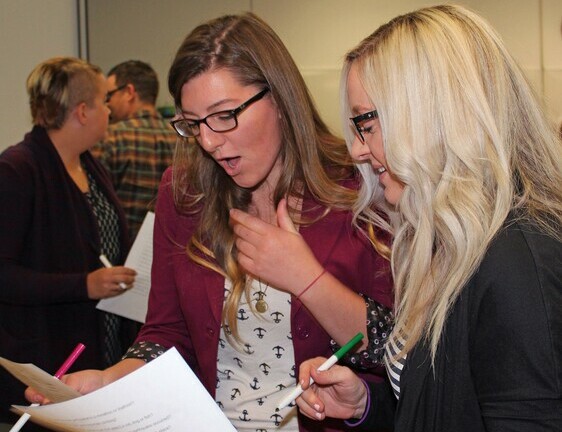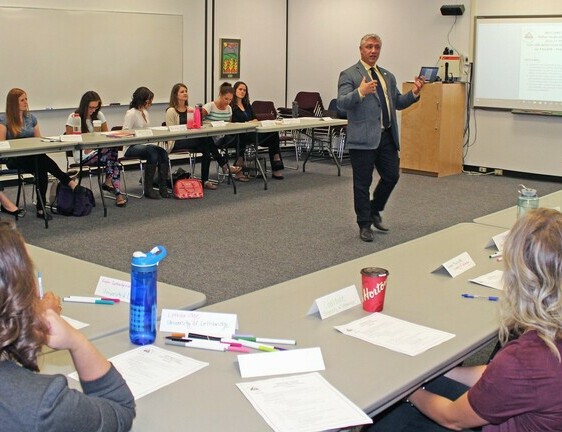
Erica Schmeelke admits the feeling of excitement she was experiencing was tempered slightly by a sense of anxiety as the school year crept closer
Like many first-year teachers, there’s plenty of unknown ahead and that’s why she found Palliser Regional Schools’ teacher induction and mentorship program so valuable.
Learning about workplace procedures like payroll, classroom practices such as unit planning and the support readily available from central office staff was all beneficial. Meeting with more than two dozen new teachers hired by Palliser, however, was a highlight for her.
“It’s nice to know there are other teachers in my position feeling the same way,” says Schmeelke, an Arrowwood native who will teach grades 1-2 at Champion School. “It’s important to know you have a mental support system, to know that we are in this together and can work together as far as resources and collaboration.”
First-year teachers and administrators, as well as experienced teachers and administrators new to Palliser ¬– almost 50 in total – took part in the opening sessions of the Induction and Mentorship Program leading up to the new school year.
Ken Garinger, Associate Superintendent Human Resources, says the benefits are many for all involved but the aim of the program is singular.
“We’re setting up people for success. In the end that’s what this is all about,” he says, adding the payoff filters down to the students.
While other school divisions offer orientation and mentorship programs, few offer a three-year induction program like Palliser. By providing those teachers with focused, ongoing support over a longer span, the chances of them remaining in the profession long-term increases exponentially, says Garinger.
For new teachers the first year of the program looks at the foundations of teaching, the second year on refining teaching and the third year on refining of self, through training in “The Seven Habits of Highly Effective People.”
“I remember 25 years ago, walking into a classroom and administrators saying ‘here’s the keys, here’s the door, get in there and teach,’ “he says. “You did what you knew and you did the best you knew how.”
Garinger survived and so did many others, but he also watched colleagues leave the profession, some who had the makings of very good teachers if they had been provided the necessary support.
“Those days are gone. It’s our job to make sure when people go into any job, that they are trained going in and are provided the support needed for continued growth,” he says.
Those new to the profession aren’t the only ones who can benefit from the induction program. There’s more for experienced teachers and administrators to learn than just Palliser’s particular way of doing business or areas of focus
“The moment we say, ‘I guess I’ve learned it all and there’s nothing else to know about teaching,’ that really is the enemy of growth and maybe the enemy of moving from good to great,” says Garinger.
The mentorship program also involves both teachers and administrators. New vice-principals are generally taken under the wing of their principal, while Palliser’s Directors of Learning will work with new principals, who often have the most questions about policies and procedures new to them.
When dealing with new teachers the principal at each school will recommend a veteran staff member to be their mentor, to share ideas, act as a sounding board and check in with them on a regular basis. Those mentors also stand to gain from the experience, says Garinger.
“The ‘win’ for the mentor is undeniable,” he says, speaking from a position of experience. “It rejuvenates you and you experience your own growth again, in so many ways.”





